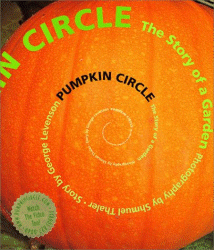All the books listed below are great resources teachers and readers can use in and out of the classroom to learn about the different parts of a plant. In these books, not only can you find important information, but ideas for projects. These books will be great to use while teaching Virginia Science Standards of Learning 4.4 a, b, and c.

The book Plants takes an in depth look at how plants work. The great photographs illustrate the different activities and experiments that you can do at home or at school. Each activity has a list of supplies (most which are readily available), and clear, direct directions. From working with seeds to observing fruit decay, there are many unique and creative activities that will help students understand the different parts of the plant and how they work. The book defines what it means to be a scientist, what is botany, and how scientists collect data. It encourages children to conduct experiments using the scientific methods as well as record all their data. It also includes home made game instructions.

A Seed Is Sleepy by Dianna Hutts Aston Illustrated by Sylvia Long
A Seed Is Sleepy is a great book for young students who are learning about plants and how they grow. The author uses adjectives to help describe certain plant characteristics (A seed is secretive, A seed is thirsty… and hungry) Simple statements like these are easy for students to understand and even make connections to. The author also describes difficult terms with easy simple explanations. The illustrations are detailed and interesting and all the plants and seeds are labeled. Both the book and illustrations do a good job demonstrating the variety of seeds, their colors, their sizes, and even the plants they grow into.
The Science Book of How things Grow by Neil Ardley
Similar to Plants (Make It Work Science), this book offers students various activities and experiments to perform easily at home or school. It explains each step carefully with step by step photographs and uses readily available materials. Each experiment provides a bit of background knowledge, the experiment, as well as a short description relating the experiment and connecting it to the real world. For example, the activity “Root Power” experiments with the strength of roots by growing marigold seeds in an eggshell (as the plant grows, the roots break the egg shell). The author includes a photograph and description of a tree breaking through a cement sidewalk. This is the type of detail that helps build deeper understanding.

Pumpkin Circle: The Story of a Garden by George Levenson and photographs by Shmuel Thaler
“The pumpkin seed makes the pumpkin plant, and the pumpkin plant makes pumpkins.” This story follows the life of a pumpkin, detailing each aspect of its life. In this book the pictures do most of the talking. Kids can see the seed in the flesh of the pumpkin, seeds being eaten as a snack, different types of seeds side by side, a seed being planted, the sprouts, and finally the seed in the soil with the roots spreading through the earth. Levenson narrates in easy to read sentences. As the garden of pumpkins grows, kids can see the large pumpkin leaves, the flowers, and even the insects the live along side the pumpkins. The pumpkin is finally ready to be made into a jack-o-lantern. Students can watch it slowly decay and return to the earth. Included in the back pages are instructions to grow your own pumpkin. I recommend this book to all young scientists especially for English Language Learners.

A Fruit Is A Suitcase For A Seed by Jean Richards, illustrated by Anca Harington
This book is a great introduction to seeds, plants, and fruits. Jean Richards compares fruits and seeds to suitcases, the seed being what is inside each fruit/suitcase. Readers can learn about what seeds are, how they travel, and different examples of fruits and seeds. The book includes colorful watercolor illustrations of seeds, fruits, and animals. This is a great book for beginning readers because it is simple and easy to comprehend.
Great links for kids
The Great Plant Escape Match the clue with the part of the plant
How Does Your Garden Grow? become a virtual gardener
Plant Word Search Find each word on the list
Plant Parts Match the plant parts with the correct definition
The Life Cycle of Plants Review games/activities
Links and resources for teachers
Parts of a Plant worksheet
Plants in Motion Time lapse movie and activities
From Seed to Plant Lesson plan
Plants and Seeds Lesson plan
Native Gardening Comprehensive guide to local plants
